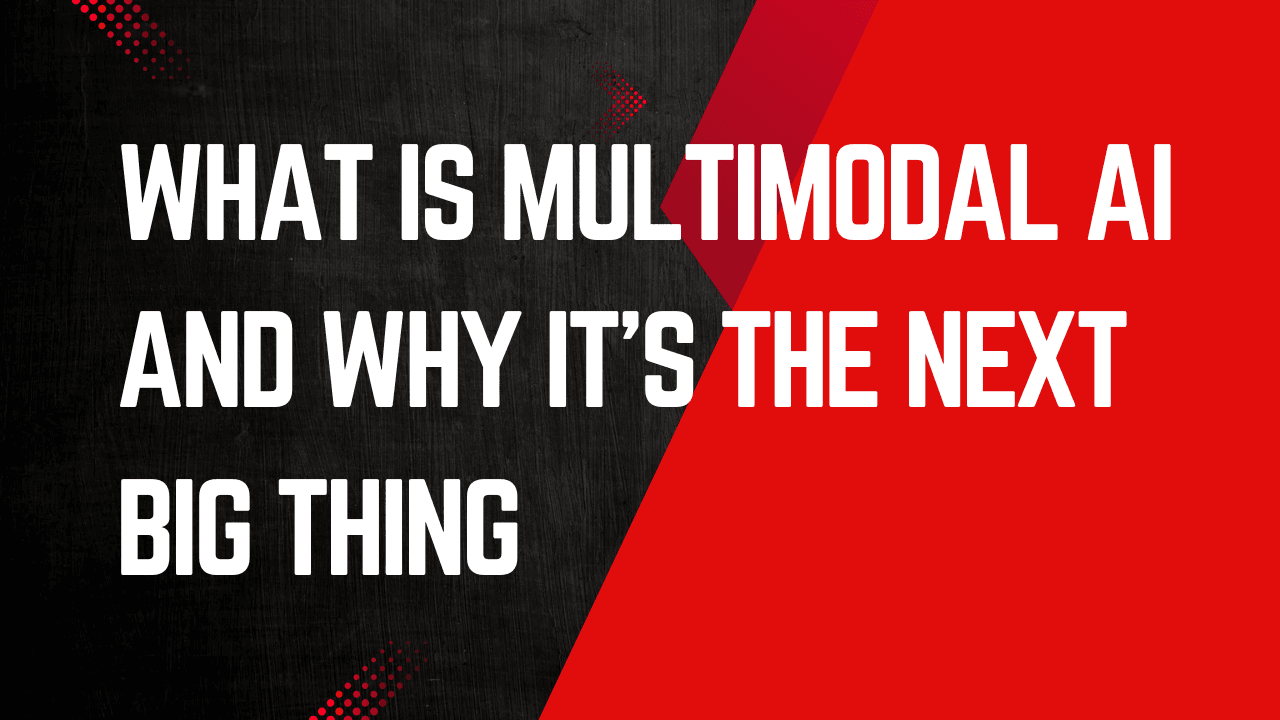What Is Multimodal AI and Why It’s the Next Big Thing

Artificial Intelligence has come a long way from simple chatbots that process text to powerful systems that can understand, generate, and combine information from multiple sources. The newest leap in this journey is something called Multimodal AI — and it’s transforming how machines interact with humans.
In simple terms, multimodal AI can process and understand different types of data at once — text, images, video, audio, and even sensor data — to produce more accurate, natural, and intelligent responses. If traditional AI was like reading a book, multimodal AI is like watching a movie, listening to the soundtrack, and understanding the plot all at once.
Understanding Multimodal AI
The word multimodal comes from “multi,” meaning many, and “modalities,” meaning forms or modes of data. A multimodal AI model combines different data types to understand the world more holistically.
For example, when you show an image of a dog and ask, “What breed is this?”, a multimodal AI model can analyze the image visually while also understanding your text question — then combine those inputs to provide the right answer.
ChatGPT, Gemini, and Claude are examples of AI systems evolving toward this multimodal capability. They can see, listen, read, and even reason across multiple inputs. That fusion of sensory understanding is what makes them so powerful.
Why Multimodal AI Is Such a Big Deal
The human brain doesn’t process information in isolation. We read expressions, interpret sounds, and link visuals to language instinctively. Multimodal AI brings that same human-like perception to machines.
It allows AI to contextualize — to understand not just the words, but the tone, visuals, and meaning behind them. This makes interactions more intuitive and natural. Instead of typing long prompts, users can simply show, tell, or record, and the AI will figure out what’s needed.
For instance, you could upload a product photo and say, “Write an engaging Instagram caption for this,” or feed a short clip and ask, “Turn this into a product demo script.” The AI doesn’t need to switch tools — it understands all of it simultaneously.
Real-World Applications of Multimodal AI
The potential uses of multimodal AI are enormous, and industries are already embracing it.
- Healthcare: Doctors can combine medical images with patient records to help AI detect early signs of disease more accurately.
- Education: Multimodal AI tutors can read handwriting, analyze diagrams, and respond to spoken questions from students.
- eCommerce & Design: Brands can use multimodal AI to create product descriptions, visuals, and marketing campaigns from a single input. Imagine uploading a photo of a new sneaker, and the AI instantly generating a full product page — including name, story, specs, and ad creatives.
- Content Creation: Designers, writers, and marketers can collaborate with AI that understands both visuals and words — bridging the gap between imagination and execution.
The Technology Behind It
At its core, multimodal AI relies on large language models (LLMs) combined with vision and audio models. These systems are trained on massive datasets containing text, images, sounds, and videos — learning to recognize relationships between them.
This integration is often powered by a shared representation layer, where all data types are converted into the same kind of mathematical format. That’s what allows the model to “connect” an image of a cat with the word “cat” or the sound of a meow.
Advancements in transformer architectures and neural embeddings have made this fusion possible. And as computing power grows, models are becoming even more capable of reasoning, generating, and understanding multiple forms of input in real time.
How Multimodal AI Is Changing the Future
Multimodal AI marks a fundamental shift in how humans will interact with technology. We’re moving from static interfaces — where we type, tap, and scroll — to intelligent companions that can see, listen, and respond naturally.
This evolution will blur the line between digital and real worlds. Customer support will feel more personal. Education will be more interactive. Creative industries will speed up ideation and production.
In short, AI will no longer just assist; it will collaborate. It will understand us on our terms — not the other way around.
Challenges and Ethical Considerations
As powerful as it is, multimodal AI also raises new challenges. It requires huge datasets, which may include sensitive or copyrighted material. Misinterpretation of visual or emotional cues can also lead to bias or errors in decision-making.
Developers and organizations must ensure these systems are transparent, fair, and respectful of privacy. Balancing innovation with responsibility will be key to making multimodal AI a force for good.
Conclusion: The Dawn of Truly Intelligent Machines
Multimodal AI represents the next phase of intelligence — machines that don’t just process language but perceive the world more like humans do.
Whether it’s analyzing images, understanding tone, or generating creative ideas, this technology is redefining what “smart” really means. The next generation of AI won’t just talk — it will see, hear, and understand us completely.
And that’s why multimodal AI isn’t just a buzzword — it’s the next big leap toward a future where technology feels truly alive.